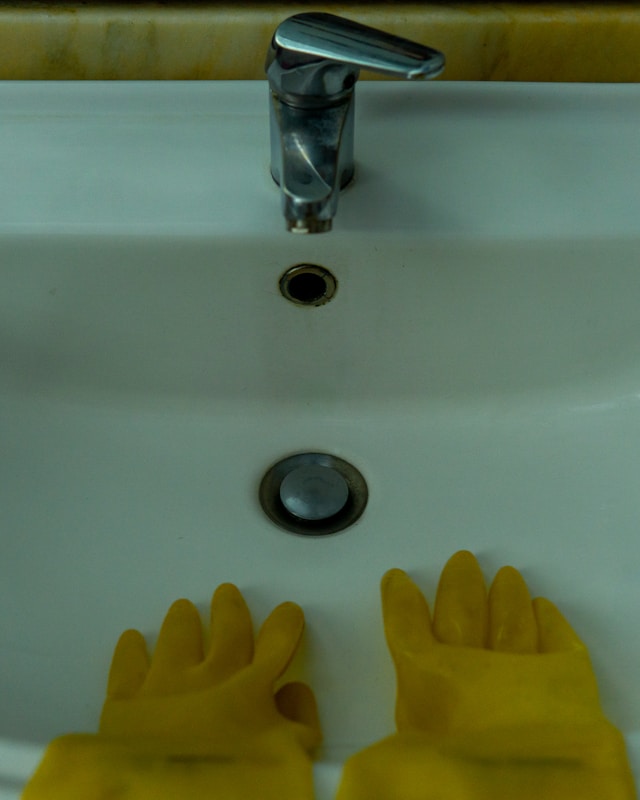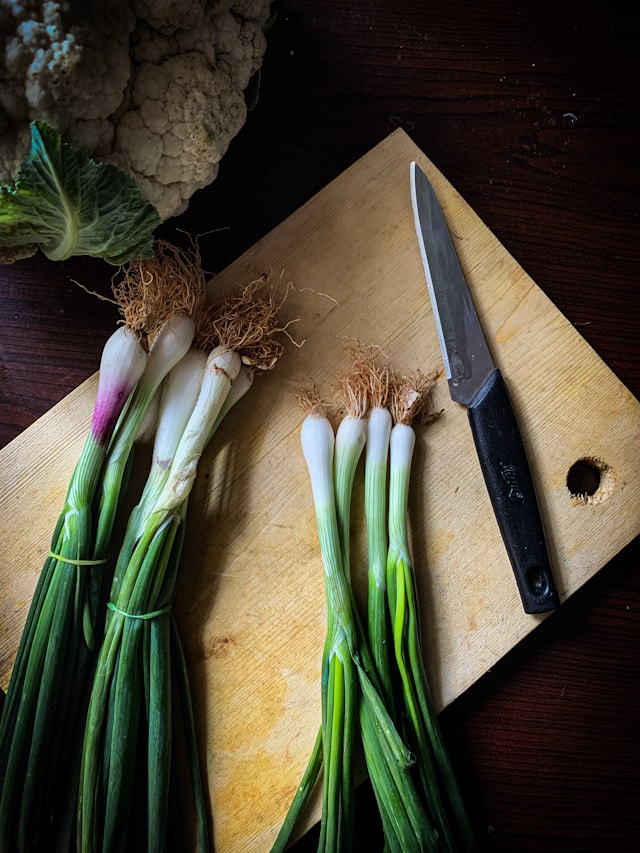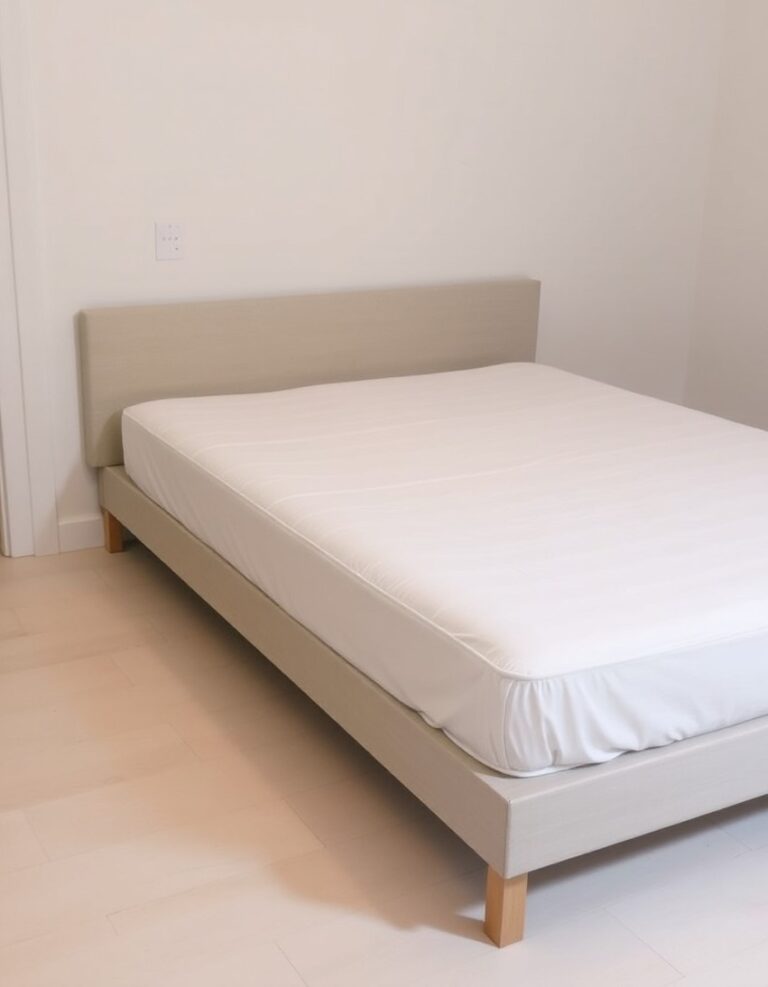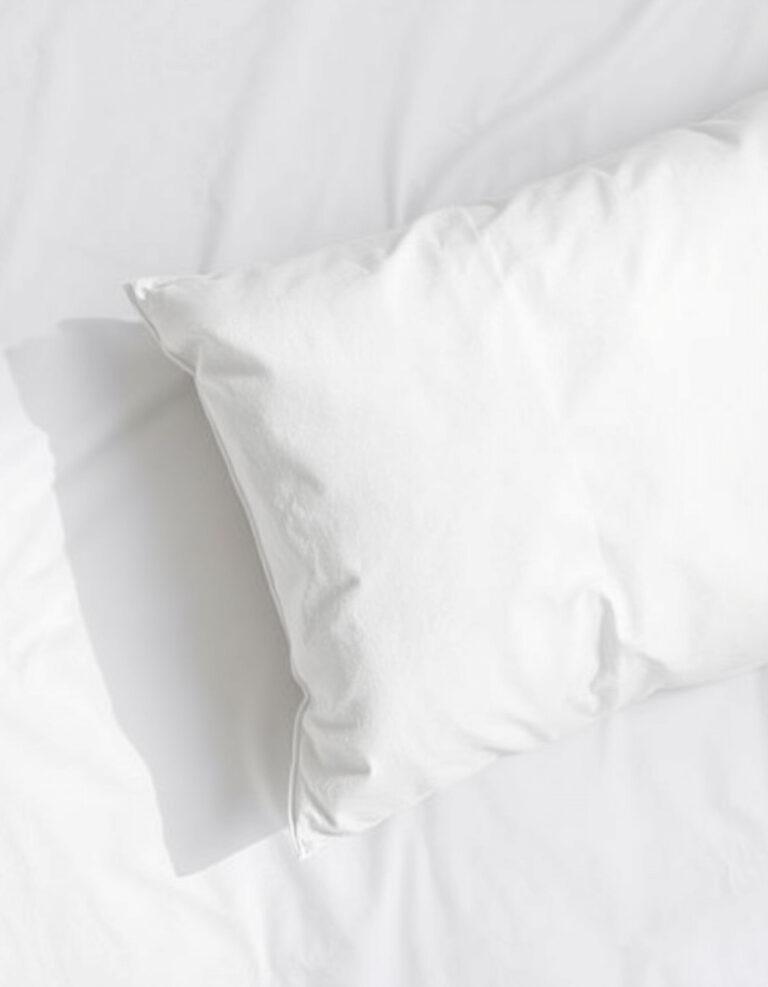Small bathrooms often struggle with storage limitations, making every square inch valuable. Installing a shelf above the toilet is one of the most effective ways to maximize vertical space while keeping essentials within easy reach. This simple addition can transform your bathroom’s functionality without requiring major renovations.
A shelf above the toilet serves multiple purposes: storing toiletries, displaying decorative items, and organizing cleaning supplies. The area above your toilet is typically underutilized, making it an ideal location for additional storage that doesn’t interfere with daily bathroom activities.

Planning Your Over Toilet Storage Solution
Before purchasing materials, measure the space above your toilet carefully. Standard toilets require approximately 24 inches of clearance from the tank to any overhead obstruction. Most floating shelves above toilet installations work best when positioned 12-18 inches above the toilet tank.
Consider your ceiling height and existing fixtures when planning your bathroom shelf above toilet. If you have a medicine cabinet or lighting fixtures, ensure your shelf placement won’t create visual clutter or interfere with their operation.
Weight capacity is crucial when selecting your shelf. A typical over toilet shelf should support 15-25 pounds, depending on the mounting hardware and wall material. Drywall installations require wall anchors, while mounting into studs provides maximum strength.
Essential Tools and Materials
Gather these tools before starting your installation:
- Drill with bits (appropriate for your wall type)
- Level (at least 24 inches long)
- Stud finder
- Measuring tape
- Pencil for marking
- Screwdriver
- Safety glasses
Required materials include:
- Shelf brackets (2-3 depending on shelf length)
- Wall anchors (if not mounting to studs)
- Screws (2.5-3 inches for stud mounting, 1.5 inches for drywall)
- Shelf board (wood, glass, or metal)
- Sandpaper (if using wood)
- Wood stain or paint (optional)
Step-by-Step Installation Process
Step 1: Locate Wall Studs
Finding studs is essential for a secure installation. Use a stud finder to locate at least two studs behind your toilet. Mark their positions with light pencil marks. If studs aren’t available in your desired location, high-quality wall anchors rated for your shelf’s weight capacity will suffice.
Step 2: Mark Bracket Positions
Measure and mark your bracket locations using a level to ensure your shelf will be straight. Position brackets 6-8 inches from each end of your shelf for optimal support. For shelves longer than 36 inches, add a center bracket.
Step 3: Drill Pilot Holes
Drill pilot holes slightly smaller than your screws to prevent wall damage. For drywall installations, drill holes sized for your wall anchors. When mounting to studs, drill directly into the wood for maximum holding power.
Step 4: Install Brackets
Secure brackets to the wall using appropriate screws and anchors. Ensure each bracket is level and firmly attached. Test each bracket by applying gentle downward pressure before proceeding.
Step 5: Mount the Shelf
Place your shelf on the installed brackets and check for stability. Some brackets require additional screws through the shelf bottom for security. Adjust as needed to ensure the shelf sits level and secure.
Choosing the Right Shelf Style
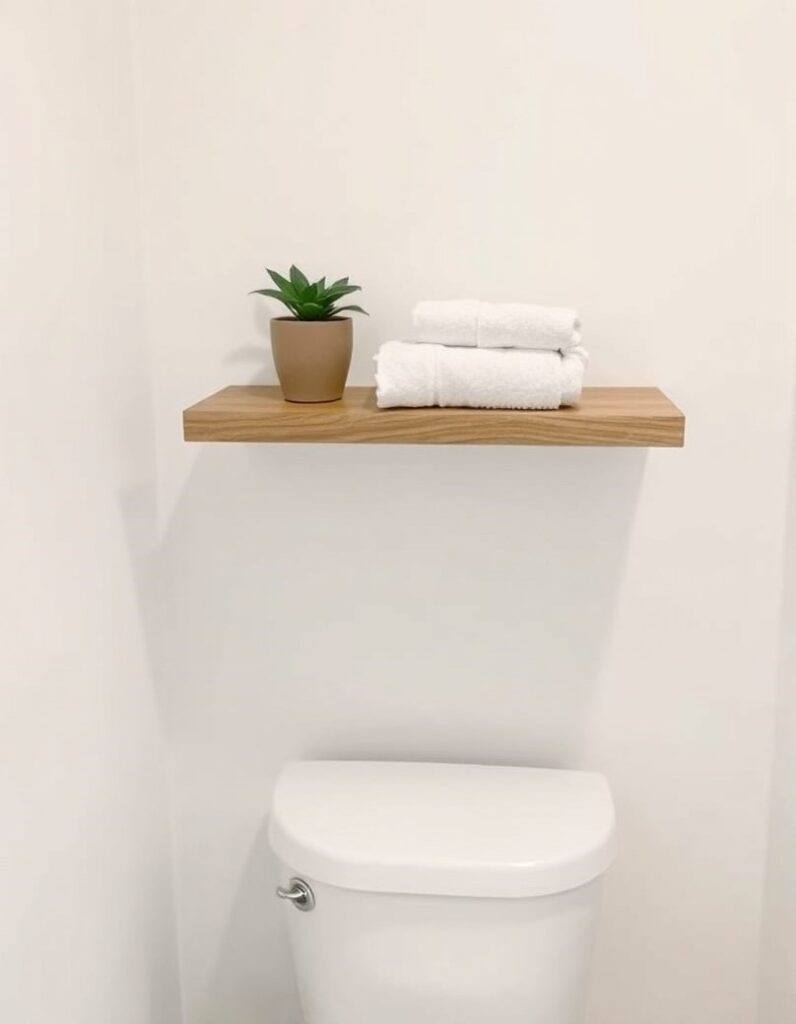
Floating shelves create a clean, modern appearance and work well in contemporary bathrooms. These shelves appear to “float” on the wall without visible brackets, providing a sleek look while maintaining functionality.
Traditional bracketed shelves offer maximum support and easier installation. These shelves work well with various decorating styles and provide clear weight capacity specifications.
Corner shelves maximize space efficiency in smaller bathrooms. These triangular shelves fit snugly in corners above the toilet, utilizing otherwise wasted space.
Safety Tips and Installation Mistakes to Avoid
Never install shelves without proper wall anchors or stud mounting. Inadequate support can cause shelf failure, potentially causing injury or property damage. Always verify your wall type before selecting mounting hardware.
Avoid overloading your shelf beyond its weight capacity. Distribute weight evenly across the shelf surface and avoid placing heavy items on shelf edges where leverage could cause failure.
Maintain proper clearance from the toilet tank and any moving parts. Ensure your shelf placement doesn’t interfere with tank lid removal or other maintenance activities.
Maintenance and Organization Tips
Regular cleaning keeps your shelf functional and attractive. Dust weekly and deep clean monthly using appropriate cleaners for your shelf material. Avoid harsh chemicals that might damage finishes.
Organize items strategically by frequency of use. Place daily essentials within easy reach while storing occasional items toward the back. Use baskets or containers to group similar items and maintain a neat appearance.
Check mounting hardware periodically for looseness or wear. Tighten screws as needed and replace any damaged anchors or brackets promptly to maintain safety.
Maximizing Your Bathroom Storage Space
Consider multiple shelf levels for increased storage capacity. Installing two or three shelves at different heights can significantly expand your storage options while maintaining easy access to items.
Combine with other storage solutions such as toilet paper holders, towel racks, or cabinet organizers for comprehensive bathroom organization. A well-planned storage system makes even small bathrooms highly functional.
Use vertical space efficiently by installing shelves at varying heights to accommodate different item sizes. This approach maximizes storage while maintaining visual appeal.
Conclusion
Installing a shelf above the toilet is a practical solution for increasing bathroom storage without major renovations. With proper planning, appropriate materials, and careful installation, this simple addition can significantly improve your bathroom’s functionality. Remember to prioritize safety through proper mounting techniques and regular maintenance to ensure your shelf serves you well for years to come.
Questions & Answers
How much weight can a shelf above the toilet hold?
A properly installed shelf above the toilet can typically hold 15-25 pounds when mounted to studs, or 10-15 pounds when using quality wall anchors in drywall. The exact weight capacity depends on your mounting method, shelf material, and bracket quality. Always check manufacturer specifications and avoid exceeding recommended limits.
What is the ideal height for a shelf above the toilet?
The ideal height for a shelf above the toilet is 12-18 inches above the toilet tank. This provides adequate clearance for tank maintenance while keeping items easily accessible. Ensure at least 24 inches of clearance between the shelf and ceiling for comfortable use.
Can I install a shelf above the toilet without drilling into studs?
Yes, you can install a shelf above the toilet without drilling into studs by using heavy-duty wall anchors rated for your shelf’s weight capacity. Toggle bolts or molly bolts work well for drywall installations, but they typically support less weight than stud-mounted installations.
What type of shelf material works best in bathrooms?
The best shelf materials for bathrooms are moisture-resistant options like treated wood, metal with protective coatings, or tempered glass. Avoid untreated wood or materials that can warp or deteriorate in humid conditions. Sealed wood shelves and powder-coated metal provide excellent durability.
How do I prevent items from falling off the shelf?
Prevent items from falling by using containers with raised edges, installing small lips on shelf edges, or choosing shelves with built-in guards. Position heavier items toward the back of the shelf and ensure the shelf is level during installation. Consider adhesive strips for lightweight decorative items.
Is it safe to store heavy items on a toilet shelf?
Store only lightweight to medium-weight items on toilet shelves, avoiding anything that could cause injury if it falls. Keep heavy items in lower, more stable storage locations. Always distribute weight evenly across the shelf surface and stay within manufacturer weight limits.
How often should I clean and maintain my toilet shelf?
Clean your toilet shelf weekly with appropriate cleaners for your shelf material, and perform deep cleaning monthly. Check mounting hardware quarterly for looseness and tighten as needed. Replace any damaged brackets or anchors immediately to maintain safety and functionality.

